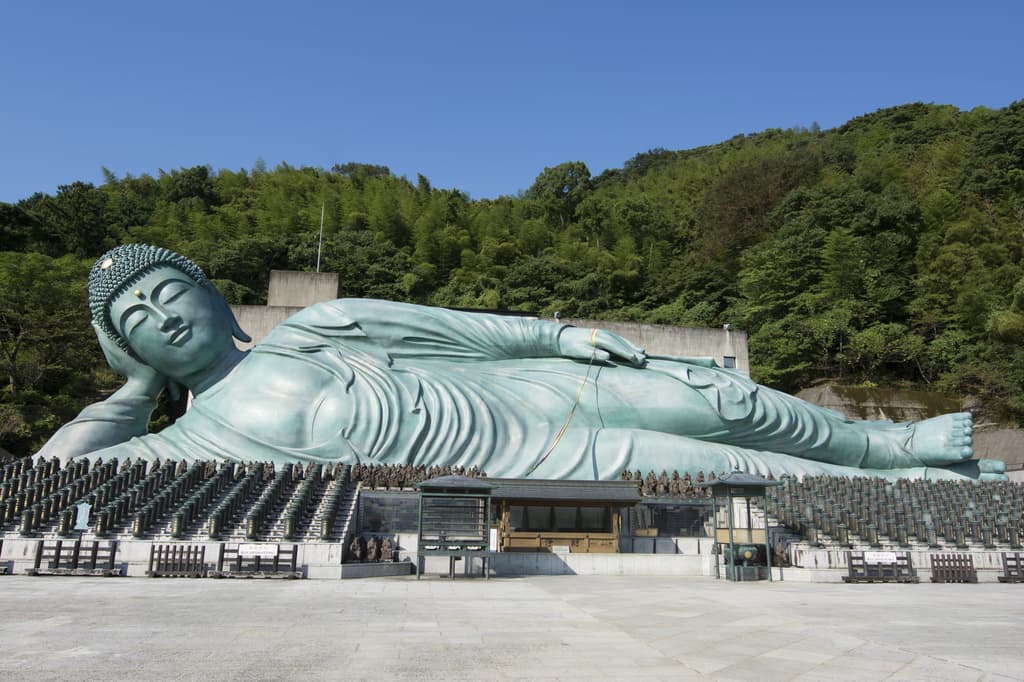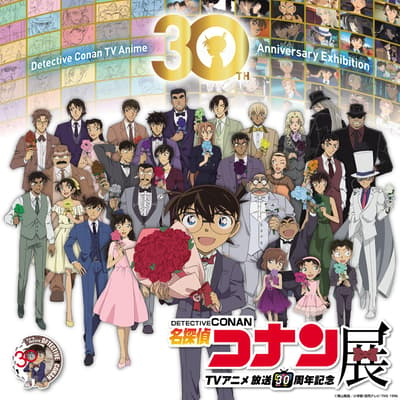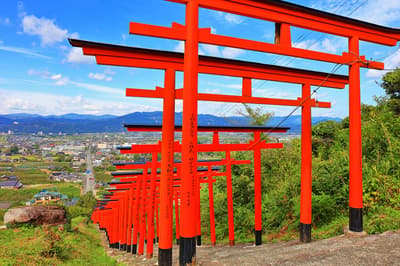Power spots are spots where you can feel the special energy of nature or historical places, and many people visit them to heal their bodies and minds or to improve their luck. In Japan, there are power spots such as shrines and nature all over the country, and there are also power spots in Fukuoka that offer various benefits, so please refer to them in your travels!
Click here to learn more about Fukuoka.
Kamiari Shrine (神在神社)
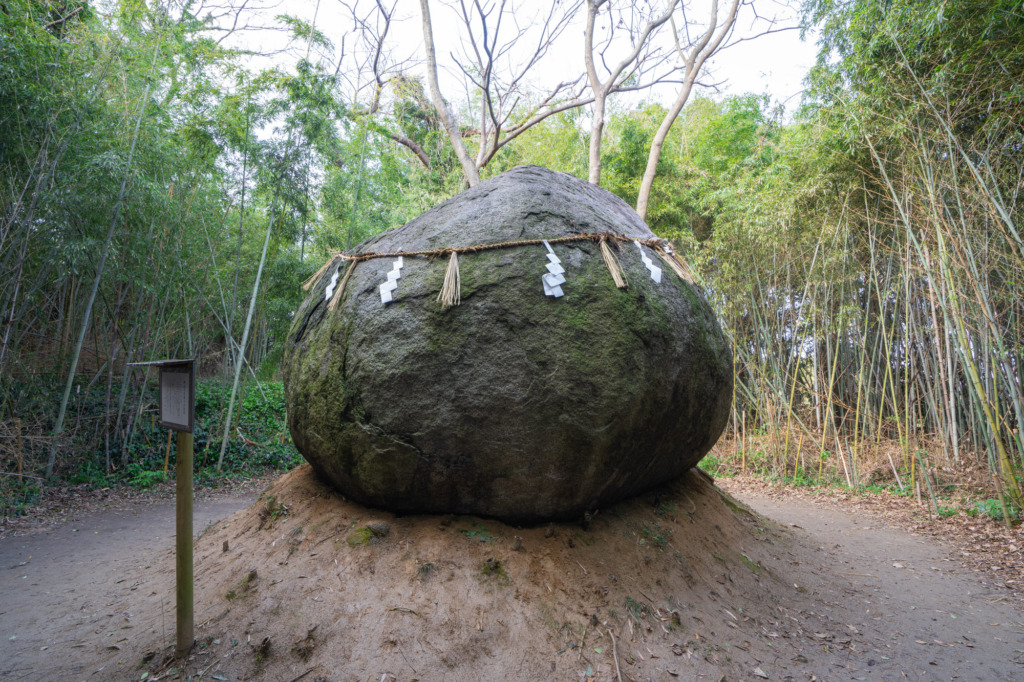
This Itoshima shrine is located about a 15-minute walk from Ikisan Station. As you proceed deeper into the wooded area of the shrine grounds, you will see an amazingly large stone called “Shinseki” (meaning “God stone”). Because of the stone’s resemblance to a giant stone in a popular anime scene, it has become a popular power spot in Fukuoka, especially among fans.
Nanzoin(南蔵院)

“Nanzoin,” with its impressive image of a large reclining Buddha, is a 3-minute walk from Kido Nanzoin-mae Station, and can be reached in about 30 minutes from Hakata Station.
The statue of Buddha is called the “Statue of the Reclining Buddha” and was created in 1995. At 41 meters long, 11 meters high, and 300 tons, it is one of the largest bronze statues in the world. It is possible to enter the statue for a fee. There are various attractions within the spacious precincts of the temple, so be sure to take the time to visit.
Miyajitake Jinja Shrine (宮地嶽神社)

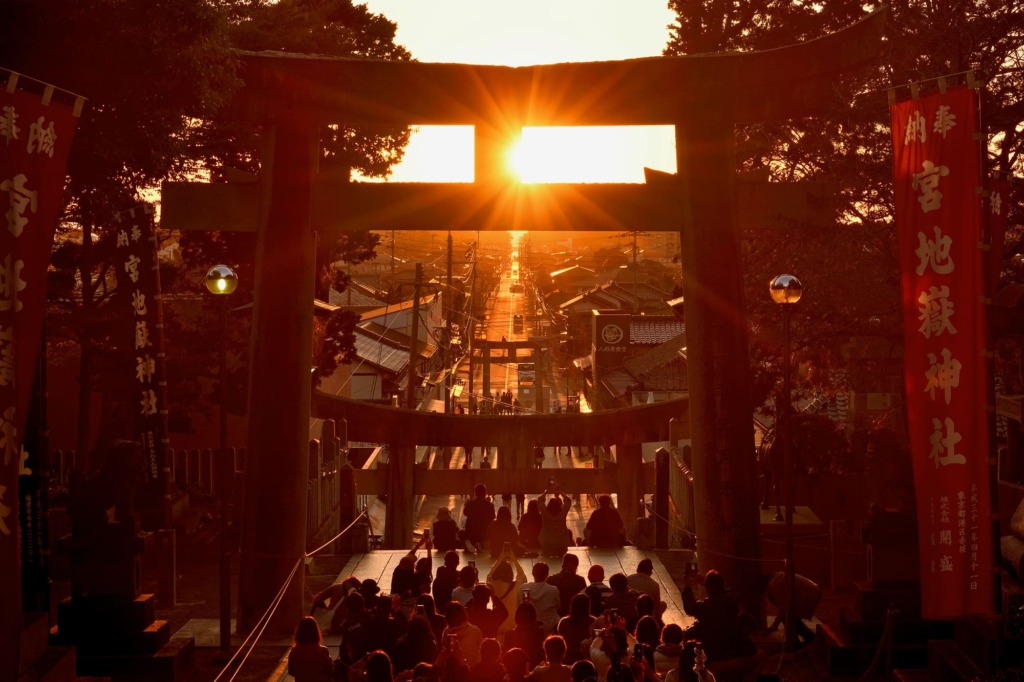
Miyajitake Shrine, a popular photo spot with a superb view, can be reached by train and bus from Hakata Station in about an hour. The spectacular view of the sunset, which can be seen only for a few days, is a must-see. The setting sun illuminates the straight approach to the shrine, creating a fantastic sight that attracts many visitors.
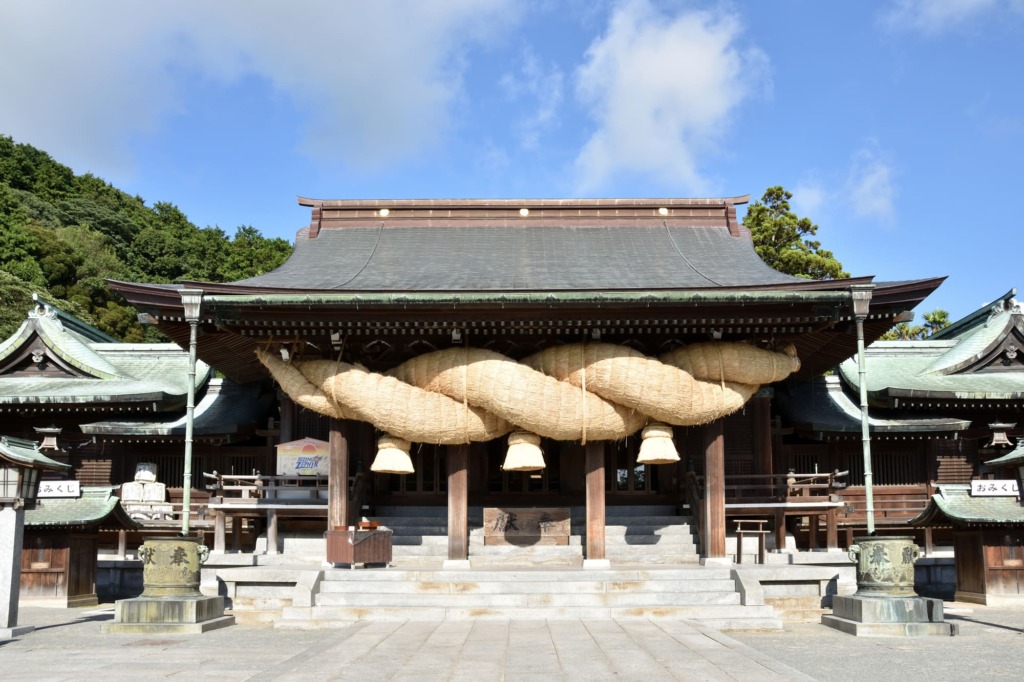
Miyajitake Jinja Shrine is believed to bring good fortune and prosperity to business, and many people visit the shrine every year. The shrine is also famous for three of Japan’s best ornaments, including a large shimenawa (sacred rope) weighing 3 tons, a large bell, and a large drum.
Dazaifu Tenmangu Shrine(太宰府天満宮)
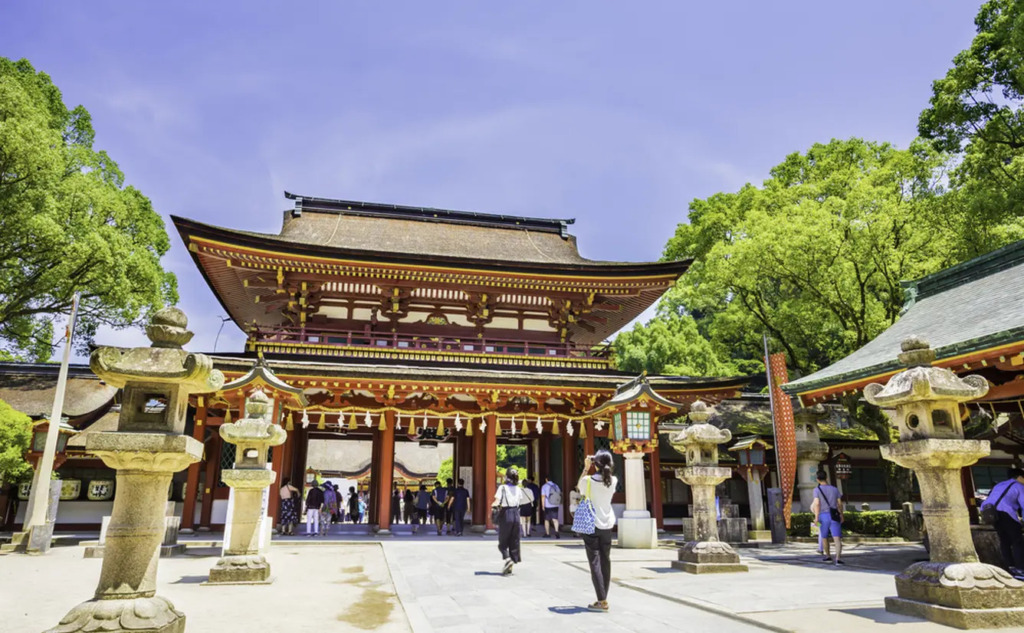
Dazaifu Tenmangu Shrine, less than an hour’s train ride from the Hakata/Tenjin area, is a popular tourist attraction that attracts many worshippers and represents Fukuoka. The shrine is dedicated to Sugawara no Michizane, known as the god of learning, and is especially crowded with students and families during the Hatsumode (New Year’s visit) and entrance examination season from January to March.

The approach to the temple is lined with long-established souvenir shops, cafes, and restaurants, making it a popular place to eat and drink. Particularly worth trying is the famous “Umegae mochi”. It is a baked rice cake filled with red bean paste and branded with plum blossoms. It does not taste or smell of plum blossoms. Many stores specializing in umegae mochi line the approach to the temple, so it is recommended to compare the different types of umegae mochi.
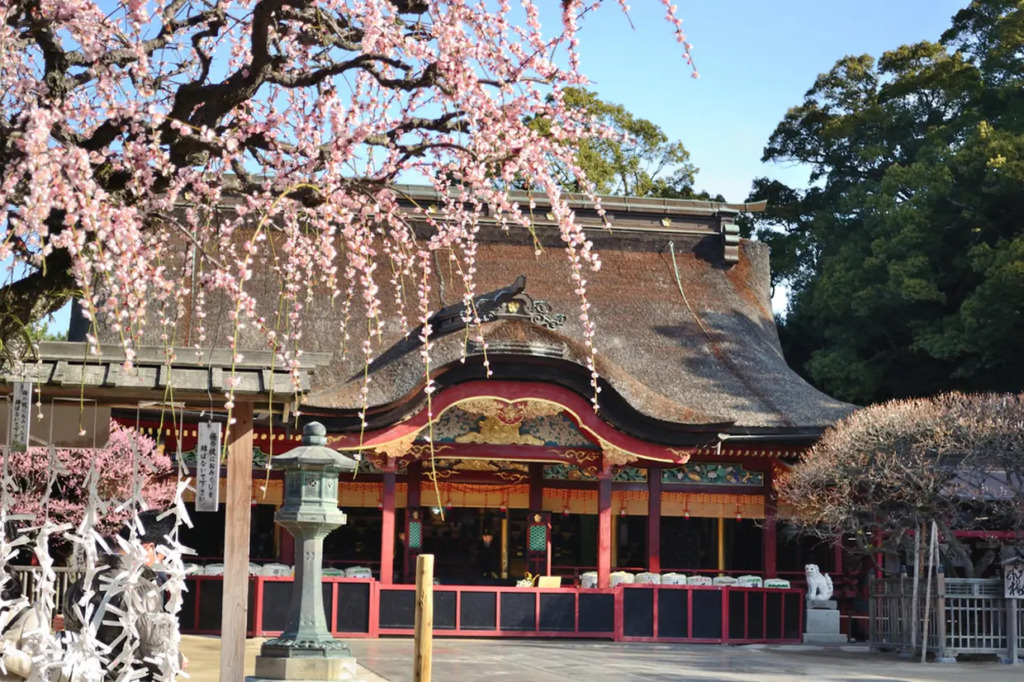
In addition, from mid-February to early March each year, many plum blossoms bloom. These plum blossoms were planted because they were favored by Sugawara no Michizane, and are known as the symbolic flower of Dazaifu Tenmangu Shrine.
Sakurai Futamigaura(桜井二見ヶ浦)

Sakurai Futamigaura is a very popular tourist spot for couples. The sunset over the ocean is so beautiful that it has been selected as one of the “100 best sunsets in Japan,” turning the beach orange.
The two rocks behind the white torii gate are called “Meoto Iwa (couple rocks)” because of the way they stand side by side like a married couple. The couple rocks, tightly bound together by a sacred rope, are a symbol of happey marriage .
Munakata Taisha Shrine(宗像大社)
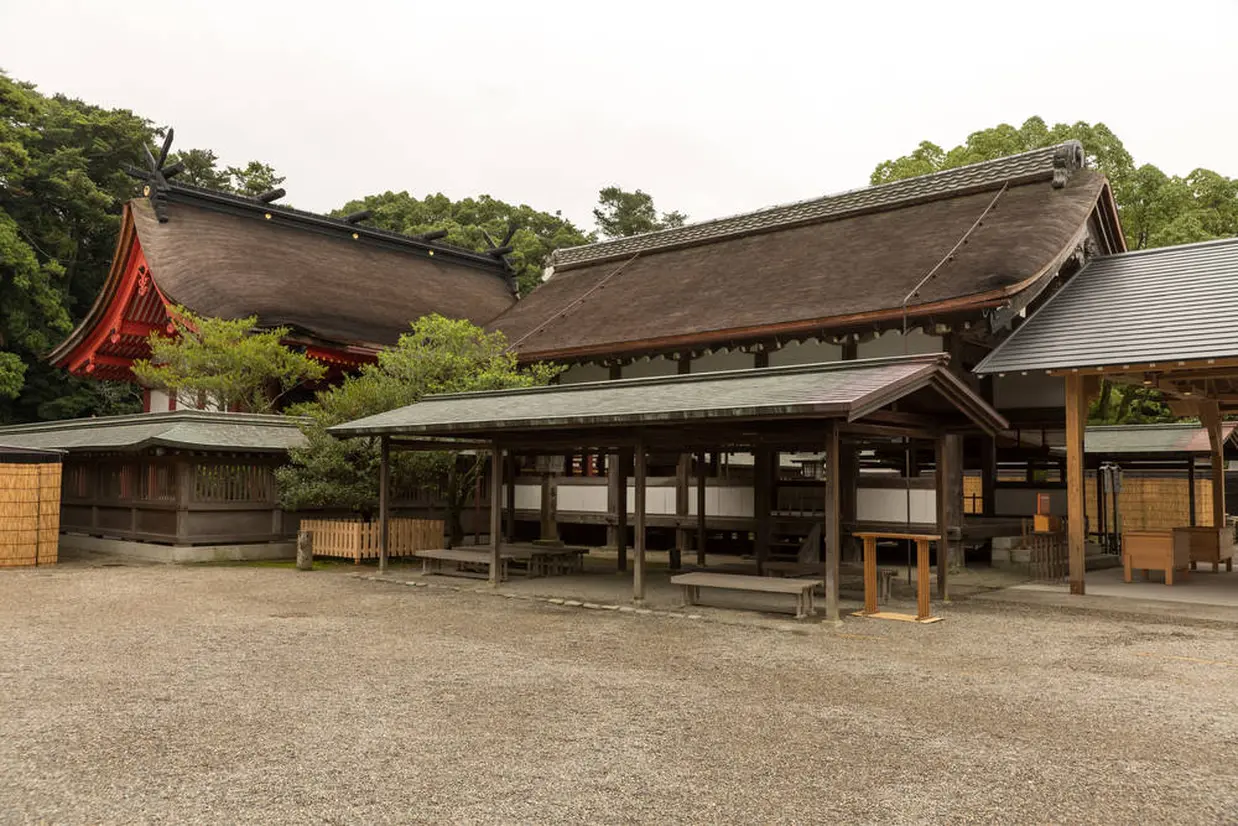
Munakata Taisha Shrine is one of the oldest shrines in Japan and can be reached by a 10-minute cab ride from Togo or Akama Stations; it was registered as a World Cultural Heritage site in July 2017.
It is a place where worshippers come to pray for safe navigation and traffic safety. In addition, the “Shinpo-Kan” (Shrine Treasure House), located within the precincts of the shrine, exhibits and houses sacred treasures such as mirrors and rings designated as national treasures.
Hakozaki Shrine(筥崎宮)
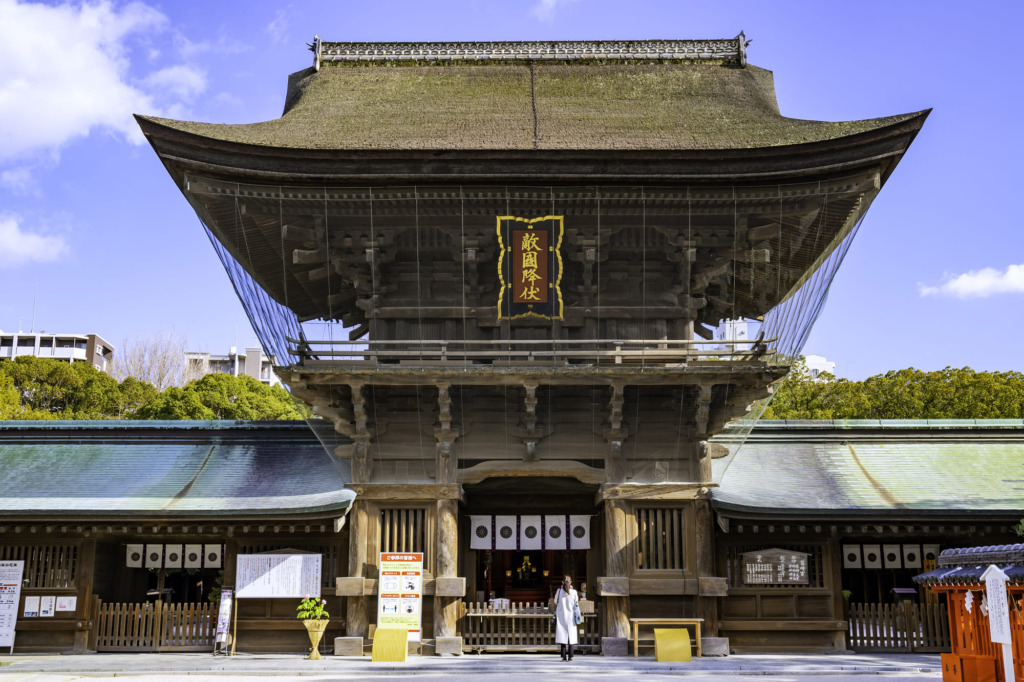
Hakozaki Shrine, one of the three major Hachimangu shrines in Japan, is located in Higashi Ward, Fukuoka City, and is known as a shrine for victory prayers. It is a 3-minute walk from Hakozakigu-mae Station and only 20 minutes from Hakata Station for easy access.
Various festival events are held throughout the year at Hakozaki Shrine. In particular, “Hojoya Festival”, one of the three major festivals in Hakata, held in September, is a big festival that attracts about one million people and the whole town is filled with a lively atmosphere.
